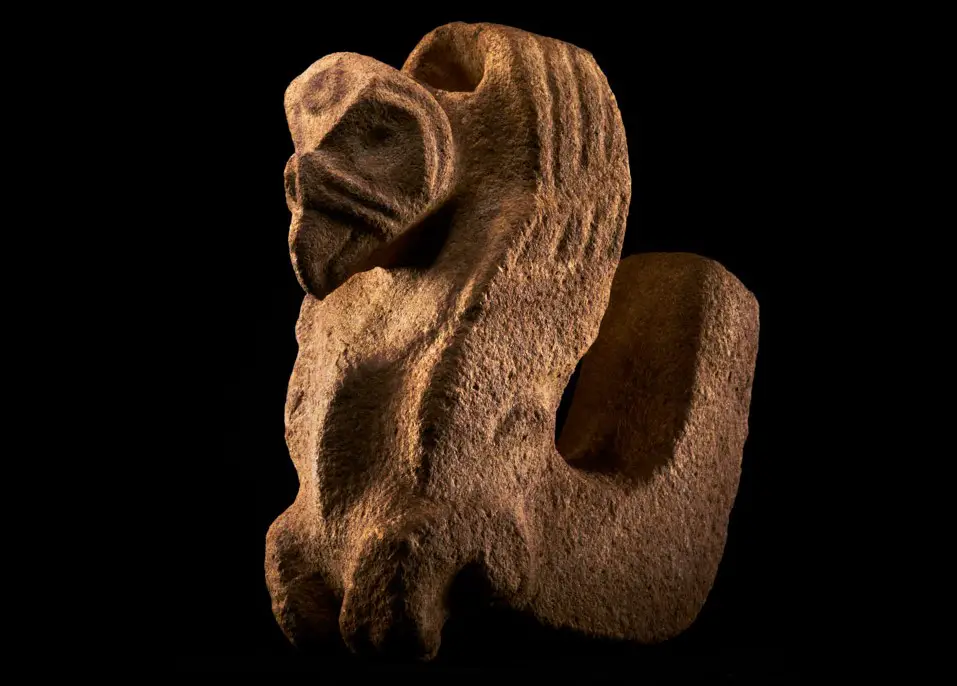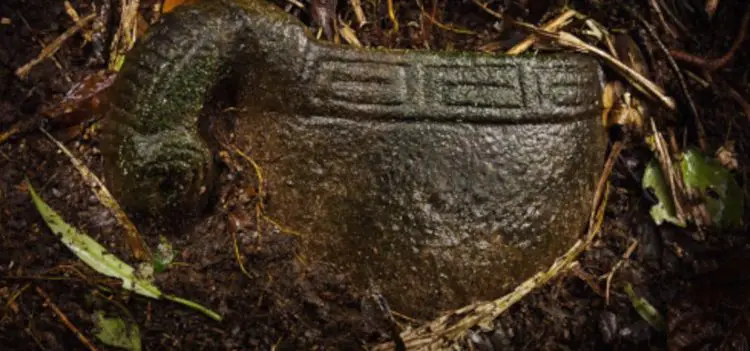America is a vast continent consisting of great ruins and forests like the Amazon. From the great rainforest of the Amazon to the highest peaks of the Andes, great ancient civilizations called these lands their home. Now, these great civilizations are deeply embedded in the mist of time, like the pyramid building of Norte Chico on the Peruvian coastline and the mysterious Olmecs of the Mexican lowlands.
Before European disease hit the continent in the 16th century, city-building and agricultural societies with rich but complex worldviews held power. Philosopher kings of the Maya and vast cities of Mashiki Aztecs were home to hundreds of thousands and their neighbors and were in a continuous battle with each other for generations. The mysterious civilization of Nazca, from where gold-rich metals were found in modern-day Colombia, and the empire-building Inca of the Peruvian mountains were such great civilizations that existed in these ruins. Perhaps there were many more great civilizations that were untouched by the outer world. They were so remote that we do not know if they existed or not. The Amazon is one example of this level of remote. The domesticated layout of plants and trees suggests that, in the past, this landscape was managed and handled by human hands. Due to the forest’s acidic properties, most of the evidence is gone. The Amazon rainforest is not the only land where these civilizations were found. Mosquitia in eastern Honduras is another land that is completely unpopulated.
The Gates of Hell
Mosquitia is 32,000 square miles of rainforest broken up by mountain lagoons, rivers, and swamps. This forest is located right on the ecological hotspot of the equator and one of the last unexplored places on the planet. Even in this modern century with so many tools and technologies, this forest is scientifically uninvestigated. This place could be a land filled with the treasure of unknown plants, animals, and civilizations that existed here long ago. The known animals and plants of these forests are dangerous. Early European cartographers called this place “the gates of hell.” The barbed trees and plants can tear human flesh in one go. The fer-de-lance, a killer snake that kills more American people than any other snake, roams in these woods freely. Poisonous spiders, scorpions, and bullet ants are all over the jungle floor. Deadlier red sand flies and mosquitoes infest wherever they can. The forest is also a perfect habitat for jaguars, one of the world’s most powerful apex predators and one with a taste for human flesh. Even the landscape of the forest is not human-friendly. The forest is filled with pools of quicksand that can swallow a person. Even with veteran jungle explorers that are protected in a suit, progressing here is slow.
The White City
Mosquitia was not always like it seems nowadays. Stories of a great lost city that was closed inside the walls of white stones have been told for centuries. This legend of the Ciudad Blanca, the white city, is often said to be a cursed place sometimes watched over by colossal statues of monkey deities. The story might seem like fiction, like the story of El Dorado, but the tale of the lost city can be backed up by the carvings and statues that have been brought out of the forests throughout the years. The locals around this forest claim they have been to the lost city, but it is still controversial. Over the years, outside expeditions have been launched to find this great city of the monkey god. Honduras is not an ideal place for traveling and neither is it easy to find anything here. For many years, the place has been known as the murder capital of the world.
In the Winds of Wars
Since independence from Spain in the early 19th century, Central America has suffered much more than any other continent with at least 300 rebellions. Coups, civil wars, and outside invasions conspire to hamper its development constantly. In recent times, it remains one of the most economically unequal countries in the world. Corruption and conflicts between the government and gangster warlords have not reached any improvement to this day. In the 1990s, Pablo Escobar’s cocaine empire had a higher GDP than most nations on Earth and collapsed under the onslaught of the Colombian military. Most of the trade swayed north into Central America. The Mosquitia region became the main route for smugglers. Every year, a large number of drugs are transported directly from here to the United States. Cartels rule much of the surrounding countryside and towns are run by gangster warlords with an iron grip. Even though the forest is under the protection of the Honduran government and has been a World Heritage Site since the 1980s, the deeper forest is rarely in control of the states. Illegal deforestation is taking place rapidly, covering more and more parts of the forest. Its valuable treasures are getting lost on the black market.
Powerful Neighbors
The Maya civilization is merely some kilometers away and is among the most studied cultures of the new world. The culture of Mosquitia is so little known that it has not even been given a name till now.
The Ancient Land
After the 1526 Spanish conquest, the years were not kind to Hernan Cortes. His men were turning against him, fighting over the ruins of their victory. Cortes wrote to the king of Spain in the hopes of preserving his prestige by suggesting a new place to conquer. Cortes heard about the land from the locals, who called it the old land of red earth. Although there were no proceedings with the letter, it was the earliest mention of the Mosquitia civilization. Twenty years later, Cristobal de Pedraza, the Spanish priest who became the first bishop of Honduras, claimed that he had traveled deep into the jungles of Mosquitia on one of his missions on a high cliff. It was a large and prosperous city spread out in a river valley. The guides told him that people used to eat on gold plates here. Pedraza wasn’t interested in gold but the hearts and minds of the Native Americans. This is why no further inquiries were made and reported on the subject. But the story of the priest added to others’ many more stories about the lost city. In 300 years, these stories have circulated from one place to another. In the meantime, Honduras became populated with Spaniards and those of mixed ancestry known as mestizos. The east remained a sparsely populated land of indigenous people unwilling to give up their secrets.
The City of Copan
When a civil war in the 1830s tore through central America, proper investigation of the land began. Travel writer John Lloyd Stephens and his illustrator companion, Frederick Catherwood, traveled south to Guatemala, slipping away from the official government to find the lost city. The men were accompanied by local men without whom they could not have survived. Soon, they found themselves walking in the footsteps of the Maya, locating the city of Copan, which was overgrown and inhabited only by monkeys and macaws. The journey cannot be understated as till now, Native Americans, now so few in population after the disease of the 1500s, were seen only as savages without a history of their own. When Stevens and Catherwood walked among the colossal ruins of the past, once home to as many as 25,000 people, they sought to change how the world sees Native Americans. A wealthy man of his time, Stephens bought the site and planned to bring the site north to have it showcased in the United States. Thankfully, thisnever happened. American fascination with the area and often direct involvement continue to this day, uncovering hundreds upon hundreds of similar Maya sites.
Copan was at the edge of Maya territory. Forested mountains in the east are barriers to further expansion of the land. Glimpses of ancient non-Maya indigenous people can be seen in the city and in the regions beyond it. There is no concrete evidence of how far the Maya civilization stretched, although the stories collided and became the legend of Ciudad la Blanca, “the white city.”
The City of Monkey Gods
In August 1940, when America was on the verge of joining the new World War, two explorers, Theodore Morde and Lawrence C Brown, funded by a rich American financier emerged from the forests four months after their dispatch. The explorers went deep in Mosquitia in search of the fabled lost white city. They claimed that the city existed, which was then called the third Honduras. When the explorers stepped into the modern world again, they were laden with a rich collection of artifacts; they seemed to have found the city. When the media was all over the story, Morde gave a radio interview on September 10th. After this interview, the legend was changed forever.
“We went to the region of Honduras that had never been explored. We spent weeks poling tediously up tangled jungle streams. When we could go no further, we started hacking a path through the jungle. Just as we were about to give up, I saw, from the top of a small cliff, something that made me stop in my tracks. It was the wall of a city, the lost city of the monkey god. I couldn’t tell how large the city was, but I know it extended far into the jungle. Probably 30,000 people once lived there, but that was 2,000 years ago. All that was left were those mounds of earth, covering crumbled walls where houses once stood and stone foundations of what may have been majestic temples. I remembered an ancient legend told to us by the Indians – it said that, in the lost city, a gigantic statue of a monkey was worshipped as a god. I saw a great jungle-covered mound, which when someday we can excavate it, a belief may reveal this monkey deity.”
Morde further describes the carvings of monkeys he found throughout the region, along with Native legends of half-man, half-ape hybrids living out in the wilderness. Morde did not give the location of the city in fear of looting. He went on to serve as a spy during the Second World War. In 1954, he sank into alcoholism and a failed marriage. He never returned to Honduras and hanged himself. Perhaps the curse of the monkey had claimed another victim. Morde’s story remains the most iconic of all expeditions into Mosquitia. His city probably never existed at all. Morde’s private journals tell the true intentions of his going into the jungle, which was gold. Theodore Morde, only 29 years old at the time, with a career as a journalist in the Spanish Civil War, was a conman who was only looking for a way to get more gold. At the end of the 20th century, anthropologists and ethnologists started recording stories and myths told by the Pech people in northeastern Honduras. Even after multiple attempts and ravaged by disease in the 16th century, Mosquitia was never conquered by the Spanish.
Most Recent Explorations
Due to unsafe surroundings, the Honduran government rarely issues permits for archaeologists to do their research here. But in recent years, the biggest development in archaeology – military-grade laser technology – became helpful in revealing the truth about the lost city. The surveys taken from the sky not only reveal one lost city but an entire civilization. In 2015, the site of the civilization was found near the banks of an unnamed river. Target 1 was visited for the first time in 500 years. In 2016, another site named Target 3 was visited.

The recent exploration of the City of the Monkey Gods, using modern laser technology, is described in the excellent book by Douglas Preston available on Amazon here.


